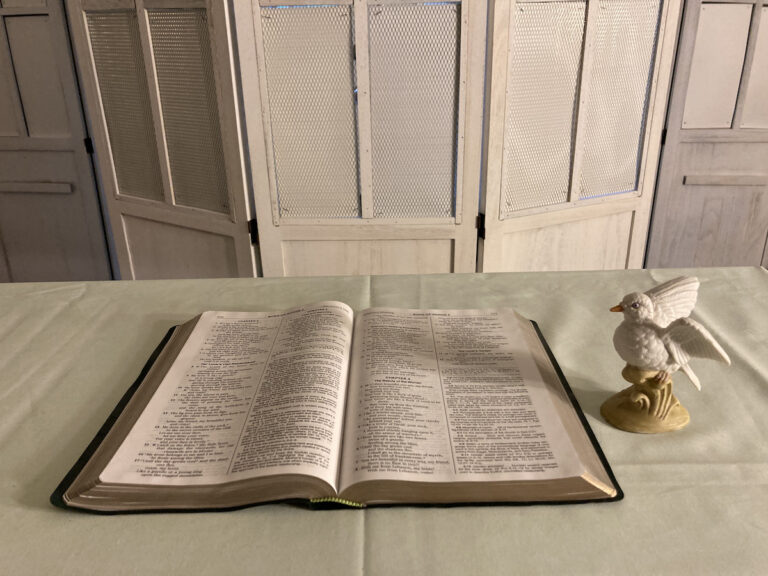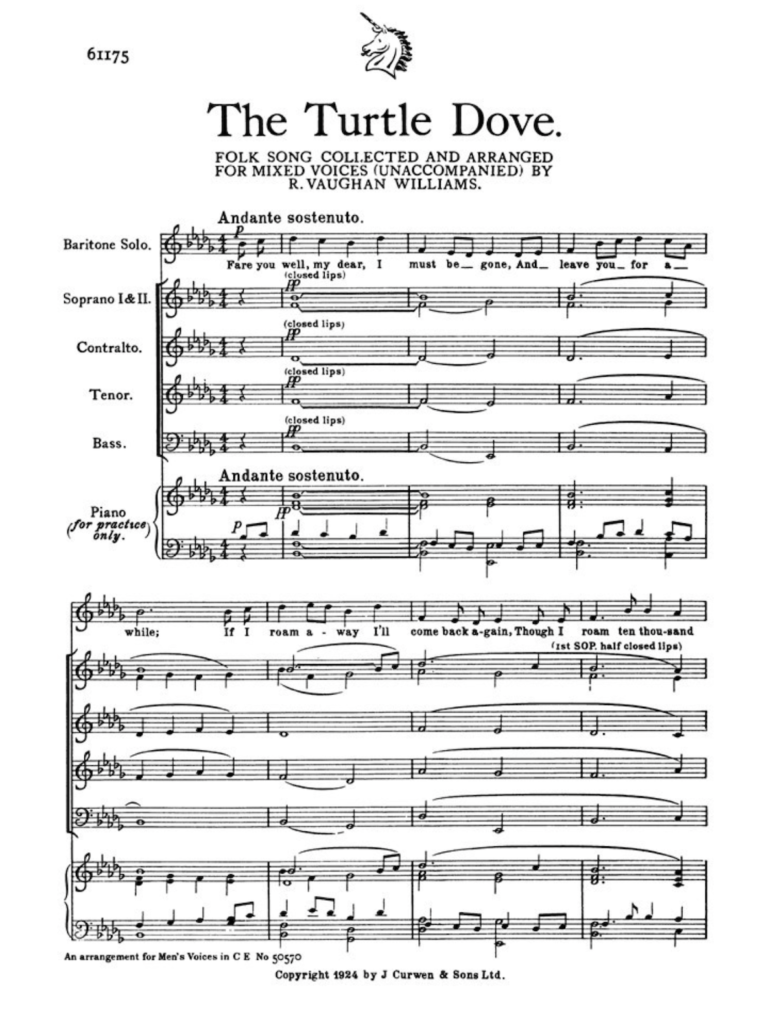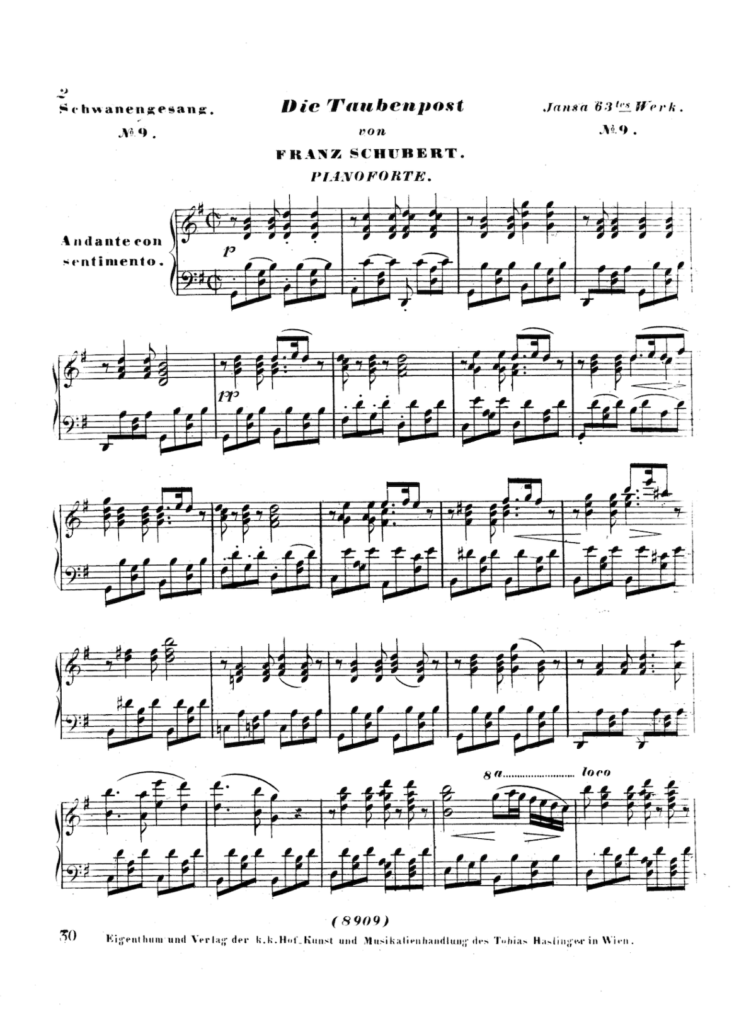The Bible has many verses about pigeons and doves. Both birds are part of the Columbidae bird family, which includes over 300 different species. The Columbidae are one of the most diverse bird families in the world and have adapted to living everywhere on the planet except the Arctic Circle and the continent of Antarctica.
Columba is a Latin word that means dove. The Latin word “pipio” refers to a chirping bird, and is the basis for the French word pigeon. Dove is a German word that describes the bird’s diving flight patterns.

Pigeons and doves look like cousins. Both have plump bodies, short necks, and small thin bills. They have strong wing muscles and are skillful, agile fliers. They can use their beaks as straws to drink water without lifting their heads. Both the male and female produce milk in the crop of the throat to feed their young.
In America we think of pigeons as rather plump birds that frequent our parks, and doves as smaller birds used in wedding ceremonies and magic acts. Across much of the rest of the world, however, the terms pigeon and dove are used interchangeably. For example, the same bird is sometimes called a wood pigeon and sometimes called a ring dove. They are in the same bird family, but which one is the pigeon, and which one is the dove, is unclear and subject to change.
Two classical composers, Franz Schubert and Ralph Vaughan Williams, wrote popular love songs about birds in the columbidae family. Classical composers are part of a formal tradition of music that began back in the 6th century and distinguishes itself by being based on a standardized way of writing down music pitches, durations, and other elements, to allow consistency of performance, and which facilitated development of musical complexity and sophistication.
I have developed a Musical Messages® rating scale that spells “MUSIC,” M for maturity, U for unity, S for sensitivity, I for integrity, and C for chemistry. These terms represent qualities in an individual who is able to experience intimacy with others. Analyzing the lyrics of two songs from the classical tradition, The Turtle Dove by Ralph Vaughan Williams and The Pigeon Post by Franz Schubert, can illustrate these characteristics in music that has endured from centuries past.

British composer Ralph Vaughan Williams was born in 1872 and died in 1958 at age 85. He adored poetry and the human voice and set more than 80 poems for voice and piano. He also loved making choral arrangements of English folk songs. He found the 1710 Scottish ”The Turtle Dove” song in 1904, published a male choral arrangement in 1919, and the popular four-part choral version (soprano, alto, tenor, and bass) in 1924.
Vaughan Williams, whose works conveyed masculinity when most compositions were emotional songs for females, begins The Turtle Dove with a baritone soloist bidding farewell to his love, assuring her of his return, even if he travels 10,000 miles away.
The choir reinforces his promise that he will never be untrue “till the stars fall from the sky”, and proclaims his devotion, that “the sea will never run dry, nor the rocks melt with the sun,” and that he never will betray the pretty girl he loves.
The song closes as the soloist sings quietly of finding a turtle dove “on yonder high tree”. He identifies with the bird’s moans, which he assumes express mourning for a lost love, and declares he will do the same for his beloved. Turtle doves are lifelong monogamous mates, symbols of romantic love dating back at least to the sixth century before Christ, in the Song of Songs book of the Old Testament Bible. The descriptive word turtle has nothing to do with reptiles, and instead comes from the Latin “turtur”, which imitates the bird’s sorrowful sound. By puffing up its throat, but never opening its bill, the bird makes a sound that marks the start of nesting, mating, and raising young. The Turtle Dove voyager is projecting his own grief on to the bird rather than recognizing the glad news of the bird’s message in nature.
Austrian composer Franz Schubert, born in 1797, was a musical genius who composed over 600 secular songs in his brief life. He died in 1828 at age 31.
Schubert set many poems by fellow Austrian Johann Gabriel Siedl to music, including the last song he wrote, which became a favorite, The Pigeon Post, Die Taubenpost in German, for voice and piano, included in his 14 songs collection published posthumously in 1829.
In Die Taubenpost, The Pigeon Post, Schubert’s song of Siedl’s poetry, the singer asks a carrier-pigeon to deliver posts to his true love, and to return with her replies, sometimes thousands of times a day.
The carrier pigeon is a domestic breed of the wild rock dove, trained to find its way home over long distances using its innate homing ability to return to its nest. These birds were called pigeon posts if they delivered communications, or posts, letters, to remote locations, providing this essential service even into the beginning of twenty-first century.

The song praises the steadfastness of the pigeon, whom he can trust to maintain correspondence between the lovers, faithfully, with unwavering cheer and good will, staying tirelessly true to her route. The pigeon has internal motivation, the success of her task being her one desire and the sole reward she seeks, with no need for external gratification. She is so intuitive that eventually she delivers the lovers’ tears, written words no longer necessary. The last line reveals the pigeon’s name, Longing, the bird whose only longing is to deliver messages of love.
The Turtle Dove M.U.S.I.C. Analysis
Throughout history men have ventured far from home seeking better lives for their families.
This song describes a male on a lonely, ten-thousand mile journey away from his bonny lass.
Maturity: The singer is consistent, promising his lady love that she can count on him.
Unity: Whether he and his mate both want him to go for their mutual benefit is unclear.
Sensitivity: Rather than expressing compassion, the singer focuses on his own emotions.
Integrity: The singer is sincere, declaring that he is so deep in love he never will be false.
Chemistry: He conveys pessimism and sadness, conveying a break in their connection.
The Ratings: Maturity – 1. Unity – 0. Sensitivity – 0. Integrity – 1. Chemistry – 0. Total Score – 2.
The Turtle Dove Analysis
Throughout history men have ventured far from home seeking better lives for their families.
This song describes a male on a lonely, ten-thousand mile journey away from his bonny lass.
Maturity: The singer is consistent, promising his lady love that she can count on him.
Unity: Whether he and his mate both want him to go for their mutual benefit is unclear.
Sensitivity: Rather than expressing compassion, the singer focuses on his own emotions.
Integrity: The singer is sincere, declaring that he is so deep in love he never will be false.
Chemistry: He conveys pessimism and sadness, conveying a break in their connection.
The Ratings:
Maturity – 1. Unity – 0. Sensitivity – 0. Integrity – 1. Chemistry – 0. Total – 2.
The Pigeon Post M.U.S.I.C. Analysis
This song centers on the bird, who meets all five criteria, an example consistent with pigeon behaviors in nature.
The bird in the song is female, and represents the typically greater feminine inclination for intimate relationships.
Maturity: She is reliable and responsible as she carries messages day after day.
Unity: The pigeon is fully cooperative as she helps and supports the daily mission.
Sensitivity: She shows compassion and kindness, delivering even wordless tears.
Integrity: She is candid, without deception, and the posts are genuine, unchanged.
Chemistry: her attachment to her keeper is solid and strong. She is fully devoted.
The Ratings: Maturity – 1. Unity – 1. Sensitivity – 1. Integrity – 1. Chemistry – 1. Total Score – 5.
The Pigeon Post Analysis
This song centers on the bird, who meets all five criteria, an example consistent with pigeon behaviors in nature.
The bird in the song is female, and represents the typically greater feminine inclination for intimate relationships.
Maturity: She is reliable and responsible as she carries messages day after day.
Unity: The pigeon is fully cooperative as she helps and supports the daily mission.
Sensitivity: She shows compassion and kindness, delivering even wordless tears.
Integrity: She is candid, without deception, and the posts are genuine, unchanged.
Chemistry: her attachment to her keeper is solid and strong. She is fully devoted.
The Ratings:
Maturity – 1. Unity – 1. Sensitivity – 1. Integrity – 1. Chemistry – 1. Total – 5.
Conclusion
One might conclude that these song analyses support a premise that males are inferior to females. However, the sole intention of this exercise is to demonstrate an assessment of the characteristics of maturity, unity, sensitivity, integrity, and chemistry expressed in the lyrics. The sample songs were chosen because they are classical compositions about a pigeon and a dove, birds in the Columbidae family, without an agenda to prove or disprove any prevailing opinion in the culture. God made male and female co-equal, complementary human beings, with different brains, bodies, strengths, and weaknesses, yet both capable of intimate relationships, originating in and reflecting our intimacy with the Divine. Attentively listening to song lyrics is one pathway to better understanding and learning to live in intimacy in our own lives.
Genesis 1:27 So God created man in his own image . . . male and female created he them. (KJV)